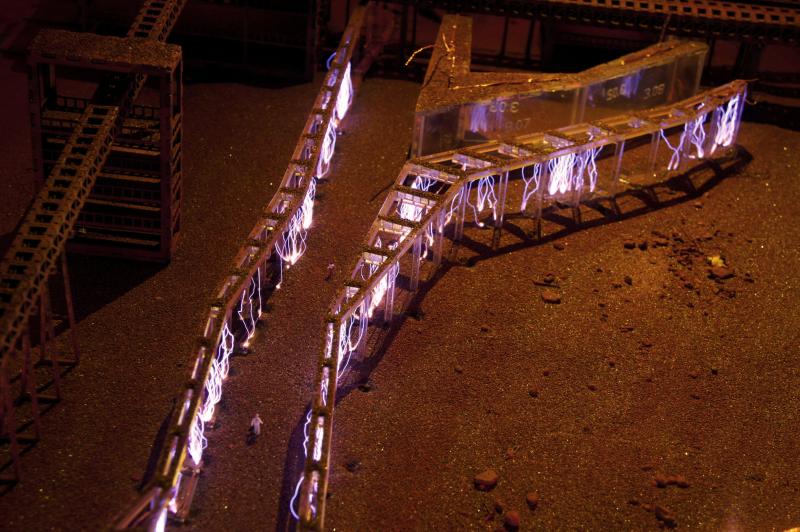
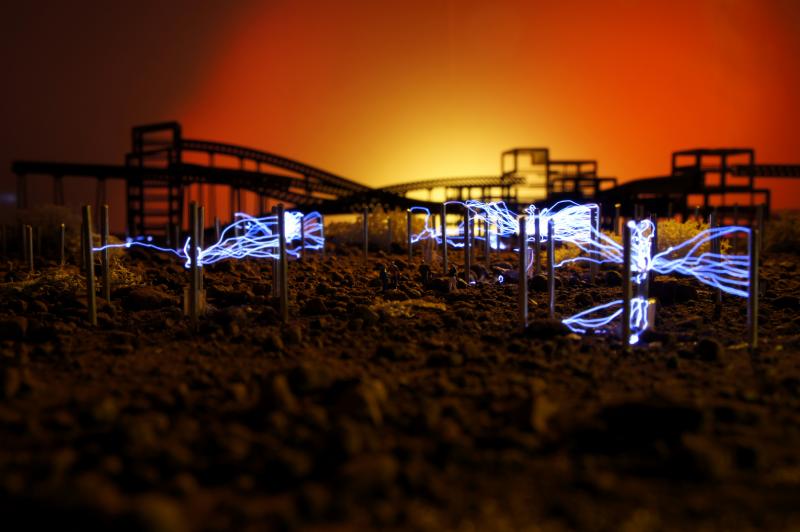
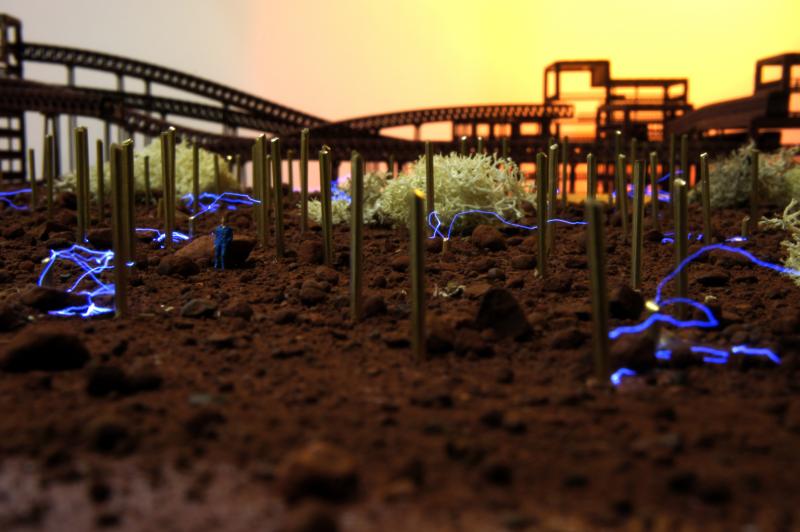
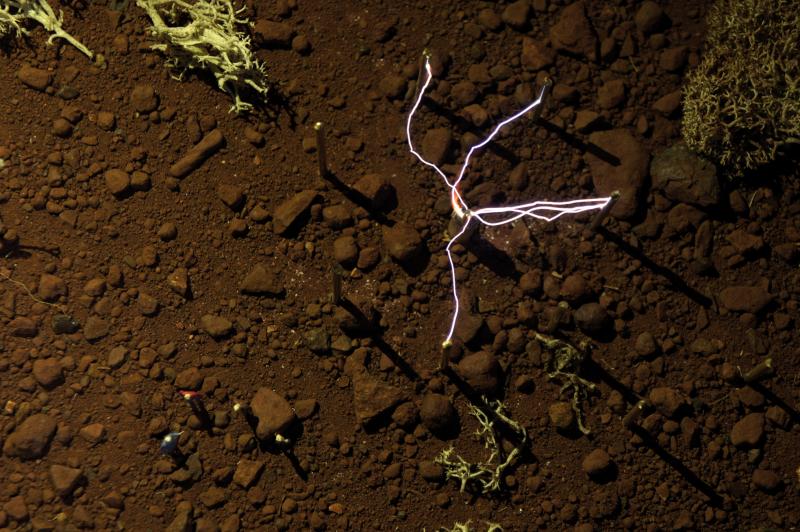
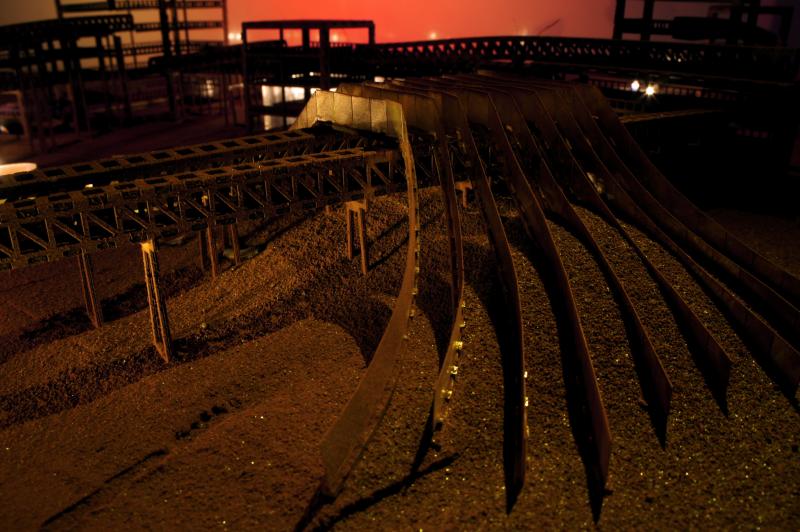
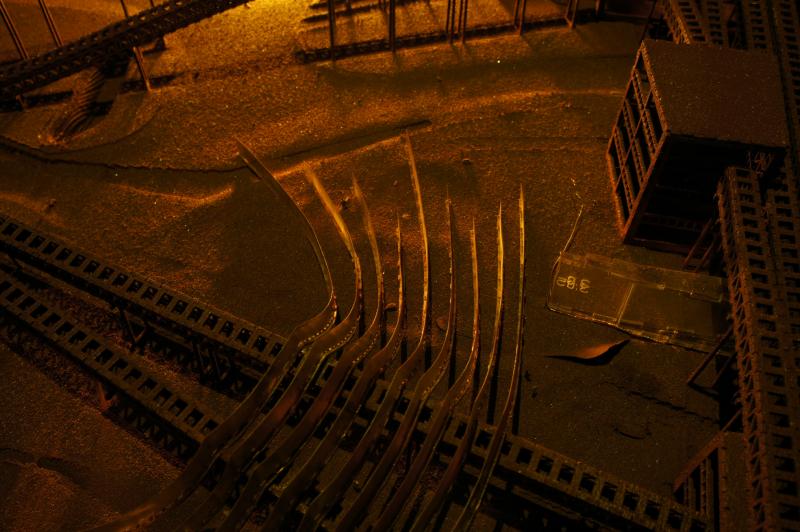
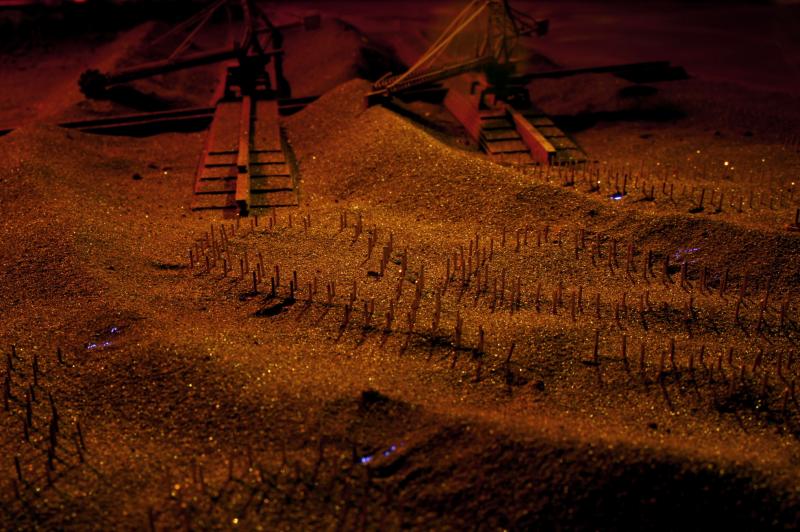
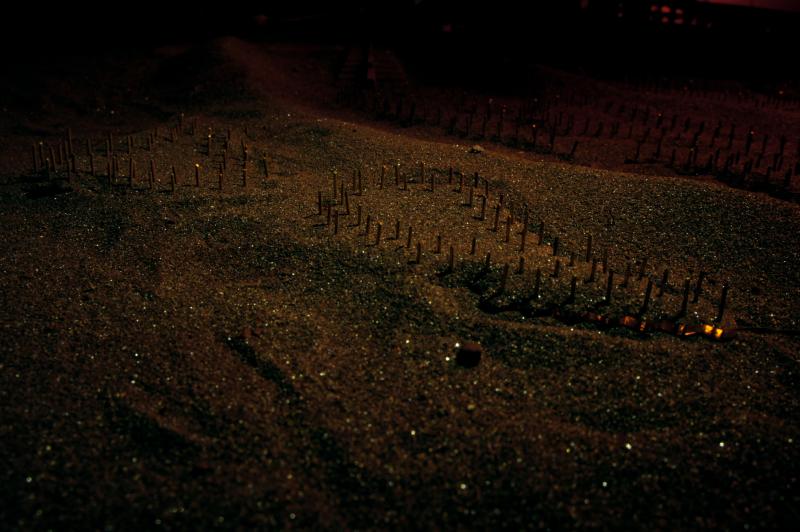
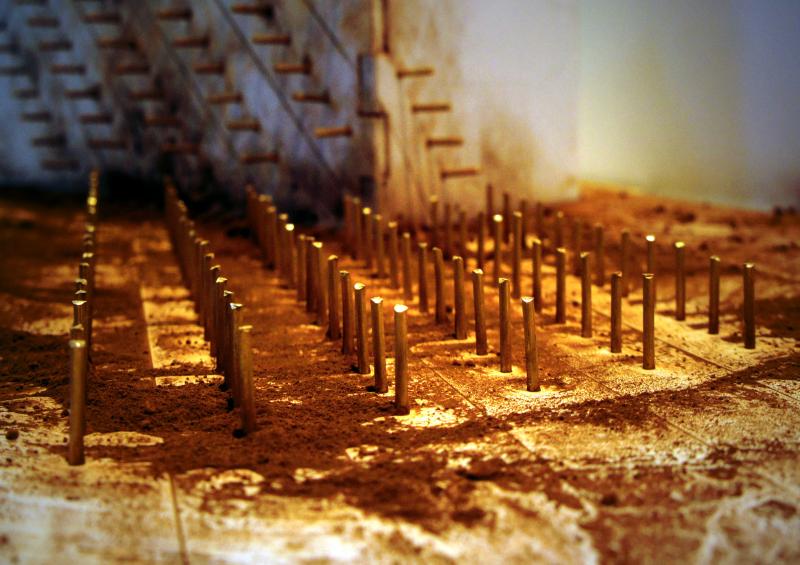

The project infiltrates the iron ore resource supply chain in Western Australia, specifically in Port Hedland, in the Pilbara region. Fine iron ore dust, the primary by-product of the industry, cloaks the surrounding townscape. The proposal, a “Toxic Garden”, is an innovative infrastructure, parasitically leaching from existing industrial facilities.
It is a speculation on a renewed cultural relationship to the by-products of iron-ore mining. This industry lies beneath the scenes of modern existence, residing on the periphery of man’s experience of the world. We are detached from the means of production and the toxicity that drives our existence.
It is not about creating a solution to the toxicity of Port Hedland, rather a proposal about how two opposing value systems of landscape may be reconciled. The project prompts discussion around the relationship between culture and industry: the economic value of the mineral site often overshadows the cultural value of the ancestral, aboriginal landscapes of Australia. It is a didactic engagement of the physical, valuable material of Earth, which forms the lifeblood of the community.
The “Toxic Garden” has been developed through a series of dust and electrical simulations, rather than conventional drawing. The physical properties of this dust, collected directly from the site, were experimented with in scale stage sets. The dust is stimulated by electrostatics and the dancing of electricity.